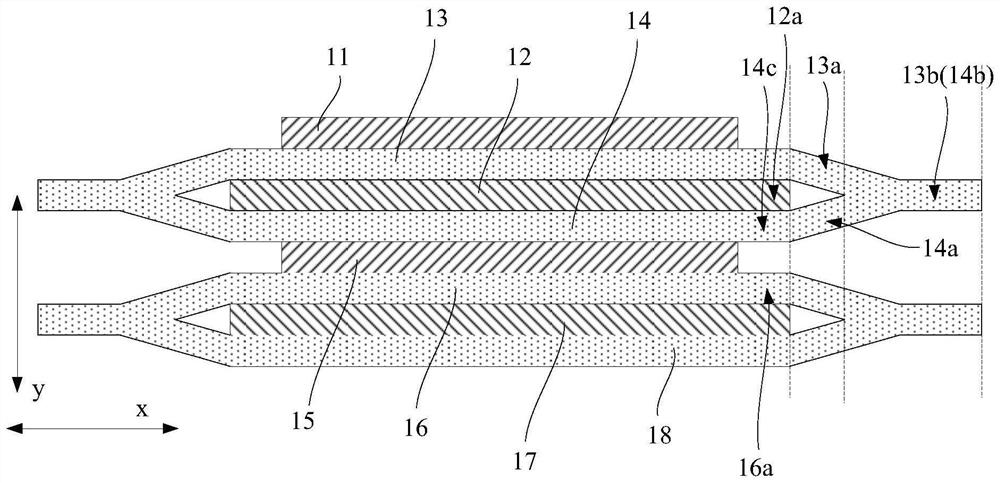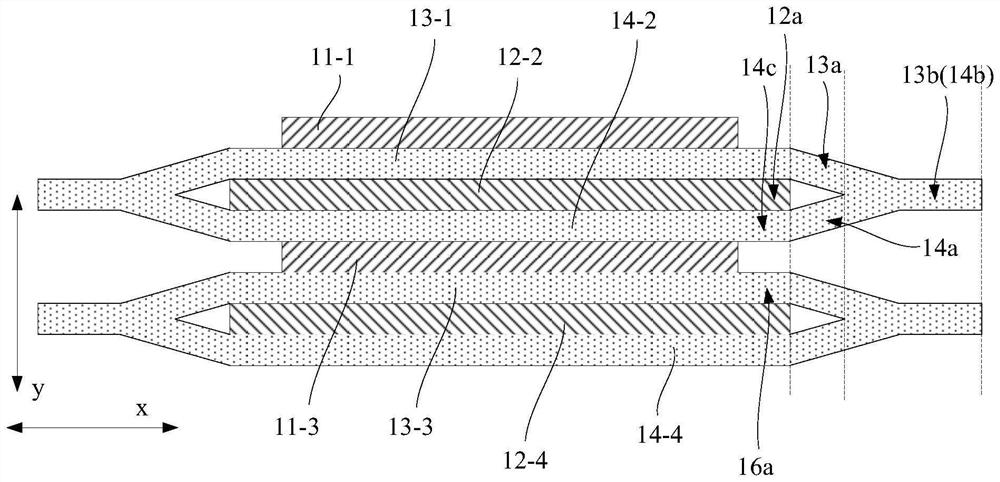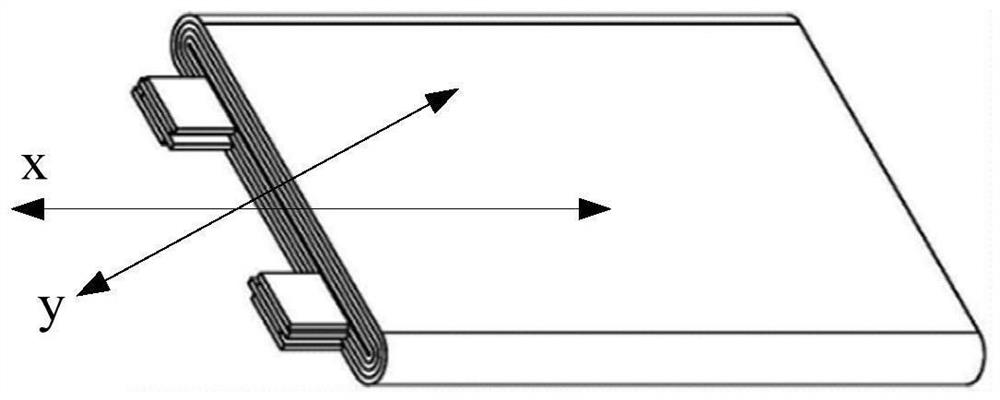Electrochemical device and electric equipment
An electrochemical and electrode assembly technology, which is applied in the field of electrochemical devices and electrical equipment, can solve problems such as inversion of the diaphragm, short circuit of local positive and negative electrodes, potential safety hazards, etc., to reduce shrinkage, reduce the risk of short circuit, Guaranteed long-term safety effect
- Summary
- Abstract
- Description
- Claims
- Application Information
AI Technical Summary
Problems solved by technology
Method used
Image
Examples
preparation example Construction
[0068] The embodiments of the present application further provide a method for preparing an isolation layer, for preparing at least one of the first isolation layer 13 , the second isolation layer 14 and the third isolation layer 16 . The following takes the material of the isolation layer including polymer fibers as an example, combined with Image 6 As shown, the method of making the isolation layer is described.
[0069] S11: using a spinning process to spray a solution containing at least a polymer on at least one surface of the positive electrode piece or the negative electrode piece, and drying to form a separation layer.
[0070] S12: Adhere the isolation layers on both sides of the pole piece.
[0071] S13: Assemble the positive electrode and the negative electrode into an electrochemical device after predetermined treatment.
[0072] The preparation process and materials of the positive electrode and the negative electrode are not limited by the embodiments of the p...
Embodiment 1
[0099] (1) Preparation of negative pole piece: the negative active material graphite, conductive carbon black (Super P), and styrene-butadiene rubber (SBR) are mixed according to a weight ratio of 96:1.5:2.5, and deionized water is added to prepare a solid content of 0.7 of the slurry, and stir it evenly, then the slurry is evenly coated on one surface of the negative electrode current collector copper foil, and dried at 110 ° C to obtain a negative electrode active material layer, and then the same process is used in the negative electrode current collector. Another negative electrode active material layer is formed on the other surface. Further, through cutting pieces and welding tabs, a negative pole piece is obtained.
[0100] (2) Preparation of positive electrode sheet: The positive electrode active material lithium cobalt oxide (LiCoO 2 ), conductive carbon black (Super P), and polyvinylidene fluoride (PVDF) were mixed in a weight ratio of 97.5:1.0:1.5, and N-methylpyrr...
Embodiment 2
[0105] The difference between Embodiment 2 and Embodiment 1 is that L1 / L2=50% is controlled.
PUM
| Property | Measurement | Unit |
|---|---|---|
| Adhesion | aaaaa | aaaaa |
| Width | aaaaa | aaaaa |
| Particle size | aaaaa | aaaaa |
Abstract
Description
Claims
Application Information
 Login to View More
Login to View More - R&D
- Intellectual Property
- Life Sciences
- Materials
- Tech Scout
- Unparalleled Data Quality
- Higher Quality Content
- 60% Fewer Hallucinations
Browse by: Latest US Patents, China's latest patents, Technical Efficacy Thesaurus, Application Domain, Technology Topic, Popular Technical Reports.
© 2025 PatSnap. All rights reserved.Legal|Privacy policy|Modern Slavery Act Transparency Statement|Sitemap|About US| Contact US: help@patsnap.com



